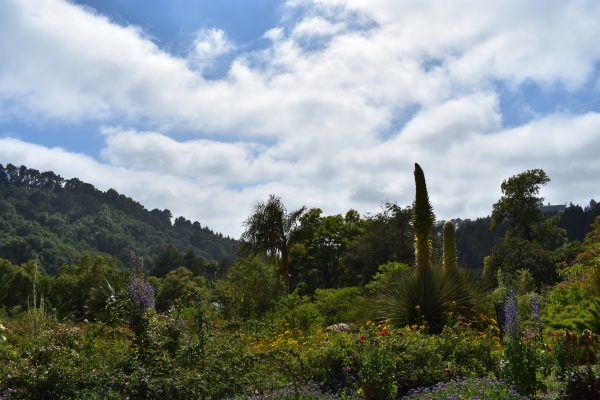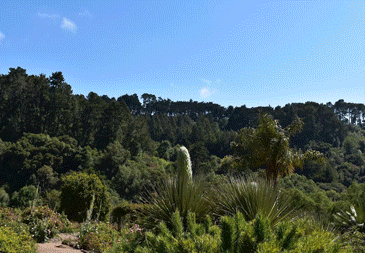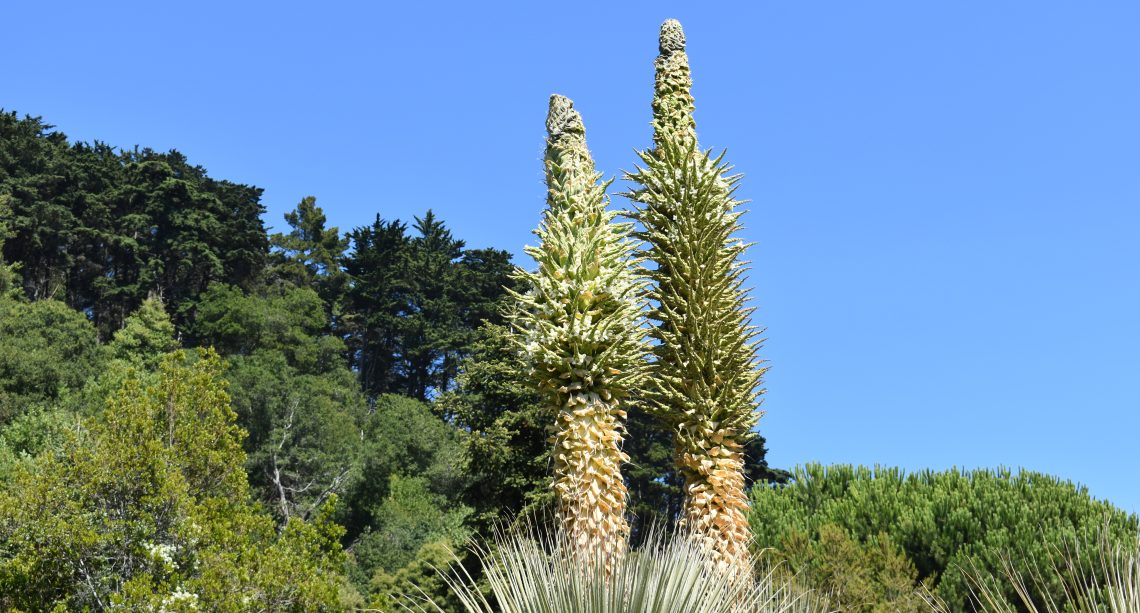
Delanie Lowe, Marketing & Communications Specialist
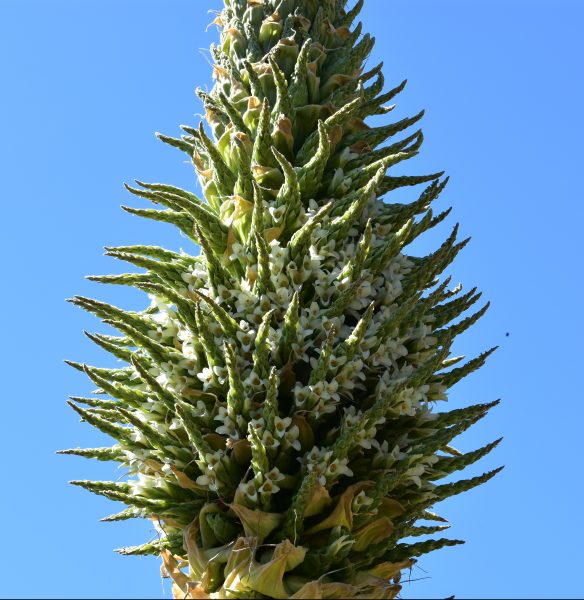
Puya raimondii white flowers are pollinated by birds, bees, and hummingbirds
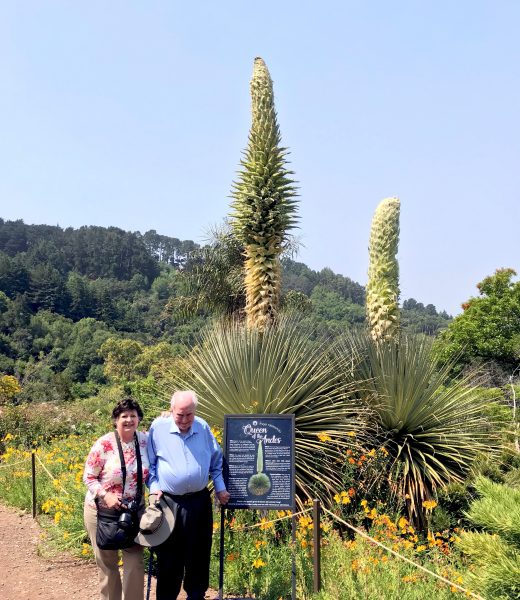
Peter Raven, President Emeritus of the Missouri Botanical Garden, Hubbard Medal recipient, UC Berkeley alum, visiting the Queen of the Andes
Not one, but two plants of the world’s largest bromeliad species, Puya raimondii (Queen of the Andes), are flowering here at the UC Botanical Garden. In the wild, this rare plant species is found at about 12,000 ft in the Andes Mountains of Peru and Bolivia and doesn’t flower until it reaches 80 to 100 years of age. But UCBG visitors won’t have to travel so far or wait so long to see the two Queens and their towering stalks.
Why so rare and special?
Queen of the Andes are classified as rare and endangered because habitat loss and changes in climate have dramatically reduced the wild populations. The Garden’s Puya raimondii are grown from seed collected in 1990 in Bolivia by botanists from the NY Botanical Garden. The first Queen of the Andes that ever flowered in captivity was at the UC Botanical Garden in 1986. A sibling of these two plants flowered at the Garden in 2014. Horticulture and Conservation experts at the Garden have never heard of two flowering at once in captivity, making this a unique spectacle in the plant world.
The importance of conservation
Though these particular plants will die after flowering, we plan to harvest seed to grow more plants here and in other botanical gardens throughout the world. There are only three populations of Queen of the Andes in the wild. Most of them have many thousands of plants, but their genetic diversity is very low, making them susceptible to changes in climate.
“We invite people to the Garden to celebrate this rare horticultural event, even if they have never heard of a bromeliad. The setting of the two plants is as dramatic as the plant itself, with a panoramic view to the Golden Gate Bridge and our Garden of Old Roses. It is a once in a lifetime photo op,” Eric Siegel, Garden Director. We hope you’ll visit the Queens soon!
